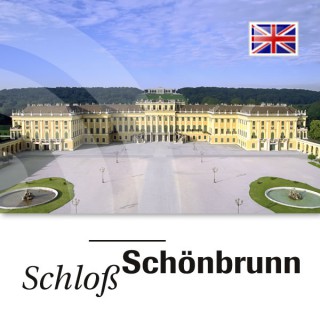Podcasts about emperor franz
- 2PODCASTS
- 4EPISODES
- 1mAVG DURATION
- ?INFREQUENT EPISODES
- May 1, 2011LATEST
POPULARITY
Best podcasts about emperor franz
Latest podcast episodes about emperor franz
07 - Grand Vermeil
Vienna Hofburg - Imperial Apartments, Sisi Museum, Silver Collection
The Grand Vermeil is without doubt one of the most important services in the Court Silver Room. A major work of French goldsmith’s art, it originally included articles for 40 place settings. Around 1850 it was enlarged to 140 settings by Viennese silversmiths. Today this magnificent service consists of a total of 4500 items and weighs over 1,000 kg. It is made of fire-gilt silver which is called “vermeil” in French. It also has an interesting history, being closely connected to the rise and fall of Napoleon. The person who commissioned this sumptuous service in 1808 was probably Eugène de Beauharnais, Napoleon’s stepson. It was executed by the Parisian goldsmith Martin-Guillaume Biennais and the Milanese goldsmith Eugenio Brusa. The service was intended for use at the court in Milan, where Beauharnais governed as viceroy from 1805 to 1814/15. After its completion the service was brought to Milan, but following the defeat of Napoleon the Kingdom of Lombardy-Venetia fell to Austria. The conditions laid down by the Vienna Congress required Emperor Franz to purchase the service from Eugène de Beauharnais. On the occasion of his fourth marriage to Caroline Auguste he had the service taken to Vienna in 1816 after the engraved arms of Napoleon as King of Italy had been replaced with his own as Emperor of Austria.www.hofburg-wien.at | Download Tour-Guide (PDF)© by Schloß Schönbrunn Kultur- und Betriebsges.m.b.H.
13 - The Habsburg Service
Vienna Hofburg - Imperial Apartments, Sisi Museum, Silver Collection
This desert service, formerly known as the Laxenburg Service, was commissioned from the Viennese Porcelain Manufactory in 1824 to mark the marriage of Archduke Franz Carl to Princess Sophie of Bavaria, the parents of the future Emperor Franz Joseph. At the end of the 18th century, Emperor Franz I, the bridegroom’s father, had had the Franzensburg built at Laxenburg, a Habsburg summer residence near Vienna. It was designed as a monument to the Habsburg dynasty, and its life-size statues, paintings, coats of arms and stained glass windows were intended to glorify the family’s history. The dynastic idea even manifested itself in the dinner service, as you can see here. Besides the arms and portraits of earlier Habsburg rulers and their consorts, 60 plates known as “Ruin Plates” display views of fortresses and castles belonging to the Habsburg dynasty. It is no coincidence that the neo-Gothic forms of the centrepiece are reminiscent of reliquary shrines, chalices and other ecclesiastical utensils. After the dissolution of the Holy Roman Empire in 1806, Emperor Franz was at pains to compensate for the loss of the sacred office of the German imperial title and to legitimise the divinely sanctioned nature and continuity of the Habsburg dynasty in the newly-created hereditary Austrian empire. Thus, even the dinner services with portraits of their ancestors were imbued with an almost liturgical character, as it were staking a claim on eternity.www.hofburg-wien.at | Download Tour-Guide (PDF)© by Schloß Schönbrunn Kultur- und Betriebsges.m.b.H.
23 - Panorama Plates
Vienna Hofburg - Imperial Apartments, Sisi Museum, Silver Collection
The second-oldest porcelain manufactory after Meissen was founded in Vienna in 1718. Although at that time porcelain was a sought-after and costly collector’s object, it was not yet considered worthy of being used at the imperial table, except for the dessert course. The fact that it became acceptable at court around 1800 is also due to the court table silver having been melted down to produce coins during the wars. In 1803 Emperor Franz ordered a porcelain service comprising 120 items for the court table, including 60 pictorial plates for dessert and 24 “panorama” soup plates of exceptional quality. The choice of motifs was both patriotic and Romantic. Framed by gold rims, the scenes include erupting volcanoes, icy glacier landscapes or imposing Viennese architecture – each plate displaying three views from Austria, Switzerland and Italy, executed by the best porcelain painters after old engravings, a painstaking task that took five years.www.hofburg-wien.at | Download Tour-Guide (PDF)© by Schloß Schönbrunn Kultur- und Betriebsges.m.b.H.
The portraits in this room show the emperors from the end of the 18th century, starting with Maria Theresa‘s son Leopold II, who followed Joseph II on the throne. Beside him is his son Franz, the last Holy Roman Emperor. In 1806, under pressure from the military victories won by Napoleon, he dissolved the Holy Roman Empire and proclaimed the Empire of Austria. Thus Franz II became the first emperor of Austria as Franz I. Following the Habsburg tradition of pursuing alliances by marriage to acquire influence and territory rather than by waging war, he married his eldest daughter Marie Louise to Napoleon, and his second daughter Leopoldine to the emperor of Brazil. Her portrait is displayed here on the easel. The other portraits show Emperor Ferdinand and his wife Maria Anna. Ferdinand was the eldest son of Emperor Franz and was popularly known by the affectionate nickname of “Ferdinand the Kind-hearted”. He was epileptic and incapable of ruling. The real ruler of the Austrian monarchy during that period was State Chancellor Metternich, who was known as the “coachman of Europe” for the way he controlled European policy with his skilful diplomatic manoeuvrings. www.schoenbrunn.at | Download Tour-Guide (PDF)© by Schloß Schönbrunn Kultur- und Betriebsges.m.b.H.





